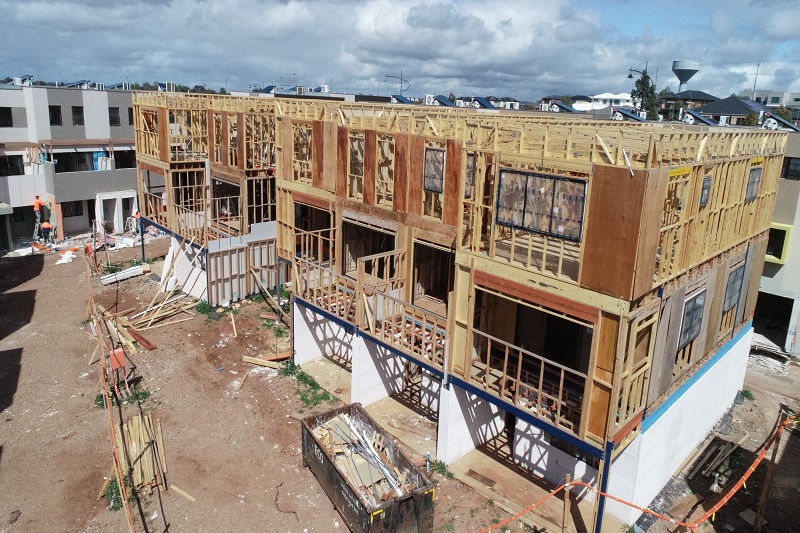Timber is a cost efficient building material and has plenty of great characteristics for outdoor structures. Steel on other hand has great load bearing qualities and is non-flammable. We compare the pros and cons of the materials here.
What are the advantages of timber?
Timber is easily available. It’s easily sourced from building material suppliers.
Timber is safe. Timber is non-toxic. It is safe to handle and even as it ages it will not cause damage to the environment. It’s also safe to recycle and maximises Green Star Energy ratings and carbon credits.
Timber is sustainable. Most timbers these days are sustainably harvested and it’s a renewable resource.
Timber’s easy to work. Machinery can easily cut, drill and prepare wood to the required size and shape. Even hardwood timbers are easy to work with, compared to other building materials like steel.
Timber is cost effective. It has less steps to process than many other building materials, therefore less to produce.
It’s versatile and visually appealing. Coming in many grades and species gives timber a huge reach across many different uses and applications. Visual grade timbers, for external and internal use, create natural textures that add great appeal to architectural and design features.
Timber is anti-corrosive. Unlike steel and many other building materials, timber doesn’t corrode in salt air or heavy industrial environments. Timber insulates. Timber is a natural insulator, which adds to energy efficiency, reducing a home’s power bill.
What are the disadvantages of timber?
Timber is natural and cellular. Wood frames need to settle a little after construction, but then remain stable.
Poorly maintained timbers may be prone to rot, pest and mould attack.
Timber maintenance is sometimes seen as more demanding than other building materials. Timber can silver or look old if it’s left unpainted or natural.
What are the advantages of steel?
Steel is strong and robust. Steel has the highest strength-to-weight ratio of any conventional load-bearing framing system.
Steel is highly fire-resistant. Being non-combustible and very resistant to fire, steel is an ideal material for building in bushfire regions. The current climate conditions are increasing the expanse of bushfire danger zones. Additionally, in the event of fire, steel doesn’t release smoke, carbon dioxide or VOCs (Volatile Organic Compound).
Steel is resistant to bugs. Insects can’t harm steel and are less likely to be attracted to it. Even if the rest of the home is attacked by damaging insects the primary structure remains sound.
Steel doesn’t warp. Steel won’t settle, twist or warp over time. And it lasts indefinitely.
Steel is completely recyclable. Wood can be down-cycled, but steel is 100% recyclable.
What are the disadvantages of steel?
Steel is more difficult to insulate because it’s a natural conductor. In colder months and climates the entire frame drops in temperature if it’s not thoroughly insulated. This leads to higher energy costs and increased bills.
While steel is immune to rot, rust can be a problem. If the metal’s exposed to damp, standing water, or a major leak for long periods of time, it corrodes. If left untreated, this rust will lead to costly repairs.
Cost-wise, metal frames are much more expensive. It’s claimed metal frames cost 10 and 20% more than wood. Extra materials like fasteners and electrical boxes are needed to complete the frame and it all adds up.
In a coastal environment, the use of steel frames can be risky. With constant salt air and moisture-laden wind producing corrosive conditions.
So which is the better building material?
This depends on the purpose of construction. Both materials produce quality foundations, but steel is usually more expensive.
Working with steel can be more labour intensive, because more construction professionals have experience with wood than with metal. Looking forward long term for the home owner, extra expense may occur with steel, if an owner adds an extension or modifies walls.
Like most things timber and steel frames both have their positives and negatives. At the end of the day, it’s a choice that comes down to what works best for your particular location, and your particular budget.



